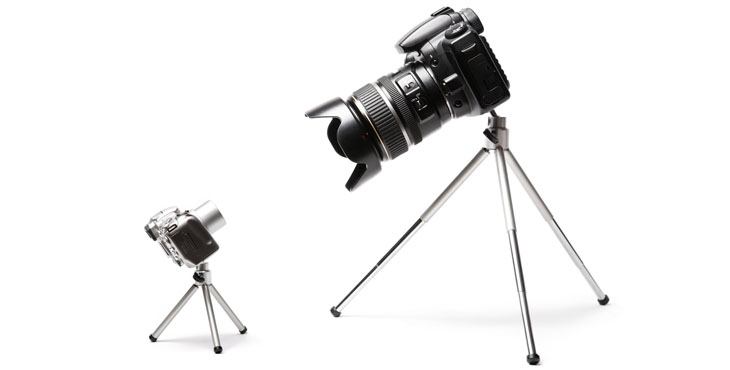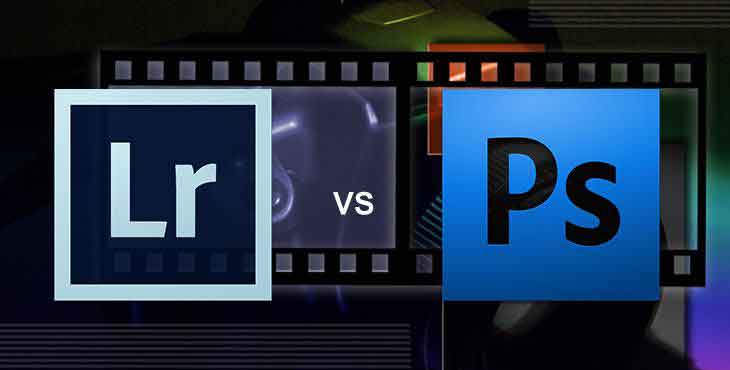The birth of photography changed the course of history and how things can be cataloged and viewed. In today’s world we are not only familiar with the concept of photography and cameras but have in a sense become dependent upon them, whether it’s about architectural photography, wedding photography, digital photography or fashion photography it has become so prolific that according to studies:
People upload an average of 1.8 billion digital images every single day. That’s 657 billion photos per year.
Statistics have also shown that; Every two minutes, humans take more photos than ever existed in total 150 years ago.
This technology has truly become a daily necessity in many regards. But to fully understand the history and development behind the revolutionary camera, one needs to take a walk down the aisles of history.
The History of Photography – A Brief Timeline
The history of photography spans across almost 200 years. It’s rather impressive when you mull over the fact that the camera has developed from a plain box that took blurry photos to the high-tech mini computers found in today’s DSLRs and smartphones.
1824: Nicéphore Niépce Invents the First Photographic Process (Heliography)
Images were obtained by spreading certain substances on a silver plate and developed with an exposure time of several days. Later, Louis Jacques Mandé Daguerre helped improve the process with the residue of lavender oil distillation, reducing exposure time to one day.
1833: Daguerre Invents the Daguerreotype
Exposure time was reduced to a mere 30 minutes. Fixing was done by immersing the plate in sea salted water.
1839: John Herschel Discovers a Way to Fix Images with Sodium Hyposulfite
The main advantages of the calotype were the ease with which one could manipulate the paper prints and the possibility of multi-printing. Sodium hyposulfite is still used today as the main component of photographic fix-baths.
1841: Physicist, Fizeau, Reduces Exposure Time to Seconds
Fizeau replaced silver iodide with silver bromide, and due to its incredible light sensitivity, exposure time was reduced to mere seconds making it possible to do portraits.
1847: Abel Niépce de Saint-Victor Replaces Paper with Glass
Silver bromide adhered to glass, and when mixed with albumen (egg white), the resulting images still had high levels of contrast, but became much sharper, which forced opticians to work on higher definition lenses.
1851: Scott Archer Replaces Improves Quality and Clarity of Black and White Images
The Englishman made a breakthrough by replacing albumen with collodion, the base of which is gun-cotton (cellulose nitrate). Because of this, the black and white images obtained through this process reached a quality unknown until then.
1880: The Invention of the Shutter Curbs Light Sensitivity
Due to previously difficulties with light sensitivity, it became necessary to conceive a mechanism able to let light enter the camera for 1/100th and even 1/1000th of a second.
1888: George Eastman Develops the Supple Base
The Kodak founder conceived the idea of the supple base, and due to this, glass plates were progressively replaced by celluloid rolls.
Color Photography
After the phenomenal creation of the camera and black and white photography, there wasn’t much that could top it except the concept of realistic color photos.
1869: First Color Photograph is Made
The first color photograph was made by a man named Louis Ducos du Hauron. He achieved this by applying the principle demonstrated previously of light decomposition in three primary colors: red, yellow, and blue.
1891: Gabriel Lippman Obtains Direct Colors on One Plate
The physicist found a way to obtain photos in direct colors on one plate by an interferential process prefiguring Holography. He received the Nobel Prize for this genius in 1906. However, due to the complicated nature of his ideas, this invention remained only a laboratory feat.
1906: First Successful Monoplate Color Process is Created by the Lumière Brothers
The discovery involved an autochrome plate that was based on the principle of the trichromatic synthesis.
1911: R. Fisher’s Discovers the Chromogen Developer
Its ingenuity rested in the ability to color every layer differently based on its sensitivity to light. This breakthrough led to improvements in lens manufacturing which could accurately transmit the colors of the subject to a film.
1935: Kodak Lays Claim to the Kodachrome Brand
Americans, L. Mannes and L. Godowsky, improved the Chromogen process, and the final product was bought by Kodak, who then named it Kodachrome.
As time went on, the democratization of photography was a true revolution and an irreversible process, which paved the way to the 21st century. Today, we have witnessed the creation of underwater cameras, the first digital camera, smart cameras, and more. This has meant a phenomenal leap forward in our daily lives, especially when it comes to business.
Photography in the Business World Today
When it comes to business, there are several ways that photographs can be used to better market products and corporations. Whether it be enhancing the mundane or enticing the public, there is always something to be gained. For photographers who excel in commercial photography, it can also be a highly lucrative market, as the field of commercial photography is broad, with room for both traditional and alternative photographs.
However, in terms of business expenses, professional photography is often seen as expendable. Obviously, this isn’t the case. Photos enable you to show your clients and customers what you have to offer rather than tell them. Currently, consumers like to see things for themselves before deciding on a purchase. Furthermore, by including designer images of your business, your team members, and your products, you can create a sense of familiarity and professionalism that could do wonders for your revenue.
In the past five years, photography in the US industry has grown by 1.6% to reach a revenue of $10bn in 2018. In the same timeframe, the number of businesses has grown by 3.0%, and the number of employees has grown by 2.4%. And the rate of growth is only climbing.
Highly Profitable Photography Businesses
Depending on your business, some types of photography are more lucrative than others. Each one, however, comes with its own host of benefits; it’s all about finding the right fit.
- Portrait Photography Too many business owners underestimate the power of professional portrait photography. Company websites and online profiles are no place for amateur shots or grainy passport photos. Professionally shot portraits are particularly effective with a little extra personality thrown in. They need to tell a story or, at the very least, give some background for the viewer to latch onto.
- Product Photography Quality product photography hinges off the ability to truly understand the target market. A well-lit photo of a picture is good. A striking image of a purchasable “problem-solver” is better. There’s more to the process than meets the eye. It’s all about doing an appropriate amount of market research before the shoot.
- Lifestyle Photography Situational photography is all about setting the scene. The goal behind lifestyle photos is to convey a particular emotion that helps customers to identify with your brand. It’s more about what’s in the scene than what you’re trying to sell. The key to lifestyle photography is relatability.
- Event Photography Capturing top quality, emotive photographs at an event can be challenging for the photographer. With no studio setup and no control over the timeline of the event, the subject matter, or the people present, it’s about capturing the moment. This is photography in one of its rawest forms.
- Architectural Photography Powerful architectural photographs are a direct result of a love of architecture. There’s a certain talent in finding beauty in a particular structure. It’s all about juggling light and composition to find just the right angle. Any building can be photographed beautifully if the person behind the lens knows where to look.
- Training & Workshop Photography Capturing your internal training or workshop sessions can be a great way to give new customers insight into why you’re so good at what you do. Smart business owners recognize that the learning process is worth documenting for ourselves and sharing with others.
- Commercial Photography Commercial still and video photography is always on demand. Individuals having expertise in still and video photography can initiate this venture. This is one of the most profitable photography business ideas that require comparatively less equipment.
- Fashion Photography A subdivision of commercial photography, fashion photography continues to be popular for a variety of reasons. Fashion images lend themselves to a wide variety of uses, including editorials, catalogs, websites, and print advertising.
- Pet Photography Some might be surprised that pet photography is considered lucrative by any means. However, for photographers with a love of animals and a sprinkling of artistic skill, there’s really no limit. This fun genre of photography is growing by the day, and there are leagues of pet owners, pet stores, and organizations who need the help of a professional.
- Real Estate Photography It goes without saying that image is everything in the real estate game. The level of effort and skill involved in capturing a house perfectly is monumental. Quality post-processing software is an absolute must in this case. Realtors are constantly working hard to outstrip their competition, and solid photography is a big part of that process.
- Sports Photography While professional sports photography is mainly used in editorial applications; some sports photographers work with large advertising firms, helping them to build up their brand in a high-energy way.
Choosing the Right Tools and Partner to Enhance Your Business
When it comes to getting the best value for your money in photography, you must choose the best tools. To do this, your best bet will always be in partnering with an experienced professional.
At Smart Photo Editors, the experience is our middle name. We have spent years working with some of the most well-known photo editing features including:
- Post Processing Techniques
- Frequency separation
- Gradients
- HDR photography
We strive to highlight our clients’ business and marketing point of views and are willing and able to assist in any photography project no matter the size. With our assistance, you don’t need to try and navigate the complex and intricate world of photo creation and editing and instead can take those all-important steps towards a better brighter business. So, go ahead and capture your moment! And let us transform the mundane into excellence.
– Smart Photo Editors
Disclaimer:All the product names, logos, trademarks, and brand names are the property of their respective owners. All the products, services, and organization names mentioned in this page are for identification purpose only and do not imply endorsement.

